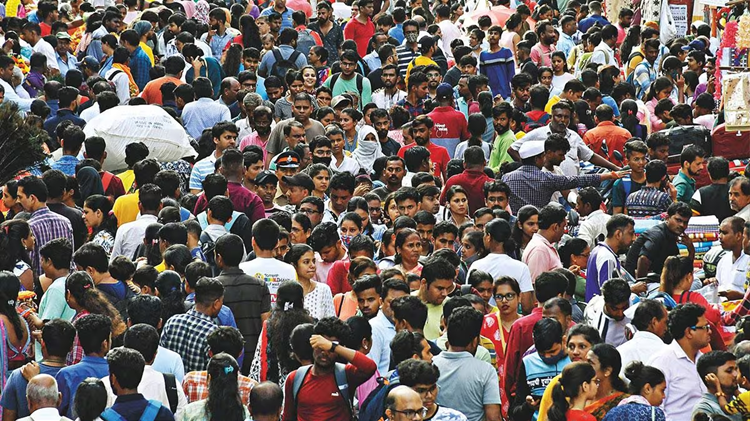Where did India’s population grow, and where did it shrink?

News Mania Desk / Piyal Chatterjee / 4th December 2024
Over the last three decades, India’s population has seen tremendous changes, with growth and decline taking place in minute detail across the country. Using high-resolution data from the Global Human Settlement Layer (GHSL), this map shows how population dynamics have changed at a one-kilometer scale, providing insights into urban expansion, rural depopulation, and regional stability.
Urban expansion: Urban areas have grown significantly, with big clusters forming around existing metropolises and industrial centers. Smaller towns and peri-urban regions—the non-urban landscape that surrounds or is next to a metropolitan area—have also risen, demonstrating the spillover effects of urbanization.
Rural decline: Many rural areas have decreased population density, particularly those with low economic growth or difficult natural circumstances. Out-migration from rural to urban regions has been a major driver of this trend.
Stability in the agricultural heartlands: Some regions, notably those in agriculturally productive districts, have stayed steady. This demonstrates balanced population retention, most likely because of local economic prospects.
Coastal growth: Coastal regions have emerged as hotspots of population expansion, spurred by industrialization, trade, and urbanization in port cities.
The GHSL data, obtained from satellite imagery and census information, provides an unprecedented glimpse at population fluctuations at one-kilometer resolution:
Growth areas are portrayed in hues of blue to highlight regions of growing population density. Declining zones are shown in red to indicate population decrease. Stable zones are yellow, representing little or no variation in density.
This high-resolution image extends beyond state or district lines, providing a bottom-up viewpoint on demographic changes. It emphasises the local effects of urbanisation, migration, and policy interventions.
Uneven Growth Patterns: The data reveals striking variations in growth, with some places having tremendous population gains while others experiencing stasis or loss within a few kilometers.
The GHSL raster data offers estimates and trends, but not exact counts.
Local abnormalities may emerge from data smoothing at a one-kilometer scale. This map serves as a reminder of India’s dramatic changes over the past 30 years. By looking outside administrative boundaries, it provides a more nuanced knowledge of population movements, which is crucial for influencing the country’s future policies and urban-rural balance.






